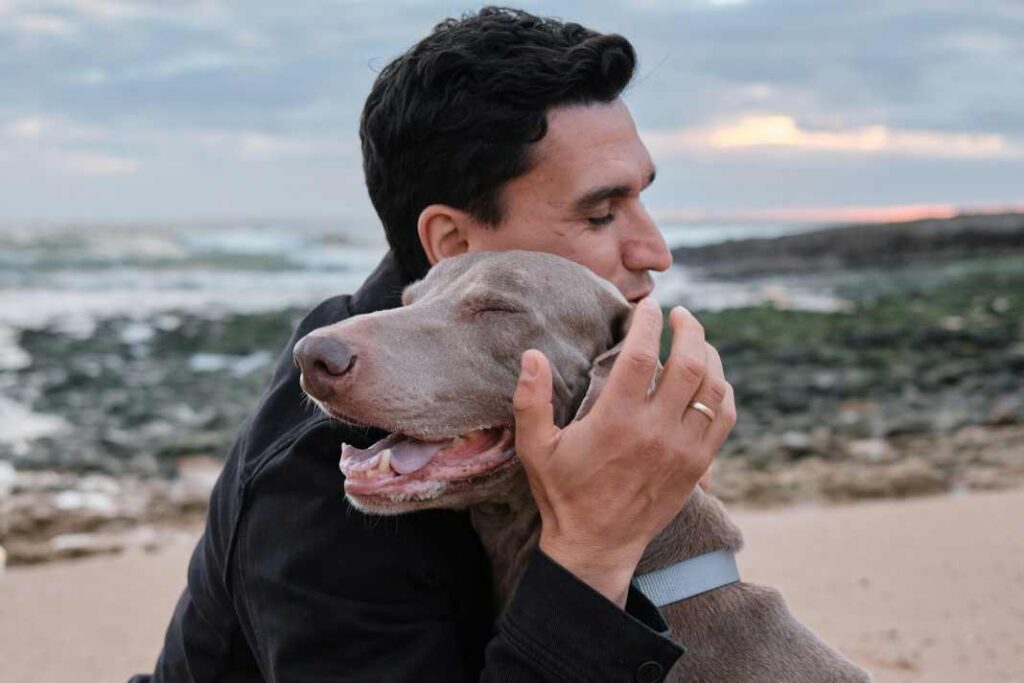You may have noticed that I talk a lot about positive reinforcement training; today, I’d like to talk about counter-conditioning training for dogs, a powerful method for transforming challenging behaviors such as aggression and fear.
This guide will walk you through various techniques, highlight the role of positive reinforcement, and detail effective desensitization strategies.
You’ll also learn how to tailor a training program to your dog’s needs, discover when to consult a professional and explore the significant benefits of counter-conditioning.
Let’s get started on your journey to a happier, well-adjusted pet.
Click Here To Visit The Online Dog Trainer Now!
Overview of Counter-Conditioning Dog Training
Counter-conditioning in dog training is a method aimed at changing a dog’s negative emotional response towards a specific stimulus by associating that stimulus with a positive outcome or experience.
This technique is rooted in the principles of classical conditioning and seeks to alter the dog’s emotional reaction, transforming fear or aggression into calmness or indifference. For example, suppose a dog reacts aggressively towards strangers.
In that case, counter-conditioning might involve the strategic introduction of strangers while simultaneously providing the dog positive reinforcement, like treats or praise, to create a new, positive association.
Counter-conditioning replaces negative dog responses with positive ones by associating stimuli with favorable outcomes.
The effectiveness of counter-conditioning is seen in its ability to address a wide range of behavioral issues, from fear and anxiety to aggression. By replacing an undesirable reaction with a more desirable behavior, dogs can learn to cope with situations that previously provoked a negative response.
Understanding the underlying principles of classical conditioning is crucial for anyone looking to implement a successful counter-conditioning strategy, as it directly involves changing the emotional responses that drive a dog’s behavior.

Recognizing and Addressing Dog Aggression and Fear
Dog aggression towards strangers is often rooted in fear, territorial instincts, or a lack of proper socialization. Early detection and intervention are key in preventing these behaviors from becoming ingrained.
Aggression can manifest in various forms, including growling, snapping, and sometimes hiding. Each of these behaviors indicates a different underlying issue that requires a tailored approach to training.
Early intervention and positive reinforcement help reduce dog aggression towards strangers by promoting positive interactions.
Positive reinforcement and consistent, positive interactions with strangers can significantly mitigate fear-based aggression. For instance, introducing a dog to new people in a controlled and reward-based setting can help decrease the dog’s anxiety and aggression over time.
This strategy emphasizes the importance of understanding the signs of dog aggression and fear to address and manage these behaviors effectively through specialized training techniques.
The Vital Role of Positive Reinforcement in Training
Positive reinforcement is a cornerstone of counter-conditioning dog training. By associating a dog’s desirable behavior with rewards, trainers can motivate dogs to repeat those behaviors.
Using high-value treats, toys, or verbal praise can significantly reinforce positive behaviors, strengthening the bond between the dog and the trainer.
One specific example is rewarding a dog with its favorite treat immediately after it calmly observes a stranger from a distance, effectively linking the calm behavior with a positive outcome.
Positive reinforcement in dog training uses immediate rewards for desired behaviors, strengthening bonds and encouraging repetition.
Timing plays a crucial role in the success of positive reinforcement. Providing the reward immediately after the desired behavior ensures that the dog makes the connection between the two, thereby increasing the likelihood of the behavior being repeated in the future.
Consistently rewarding positive behavior and avoiding reinforcement of negative behaviors are fundamental to effective dog training.

Implementing Desensitization Techniques Effectively
Desensitization involves gradually exposing the dog to the stimulus that induces fear or aggression but at a level that does not provoke an adverse reaction. This technique allows the dog to become accustomed to the stimulus without becoming overwhelmed.
For example, a dog that reacts aggressively to other dogs might start its desensitization process by observing dogs from a far distance, slowly decreasing this distance as the dog becomes more comfortable.
The key to successful desensitization is to proceed at a comfortable pace for the dog, always ensuring the dog remains below the threshold of reacting negatively.
This requires patience, consistency, and a keen observation of the dog’s body language to determine if the training is within the dog’s comfort zone.
Developing a Customized Counter-Conditioning Program
Creating a counter-conditioning program that is tailored to the individual needs of a dog involves:
- Identifying specific triggers.
- Establishing a hierarchy of stimuli.
- Setting up a gradual exposure plan.
The success of such a program relies heavily on the trainer’s ability to accurately read the dog’s reactions, adjust the intensity of the training accordingly, and consistently provide positive reinforcement.
Monitoring the dog’s progress and making necessary adjustments based on its reactions are critical components of a customized counter-conditioning program. Celebrating small victories along the way can play a significant role in reinforcing positive behaviors and building the dog’s confidence in different situations.

Seek Professional Guidance and Support When Needed
There are instances where a dog’s behavior may not improve with basic counter-conditioning techniques, or the training process becomes overwhelming for the owner. In such cases, seeking professional help is crucial.
Veterinary behaviorists and certified dog trainers specializing in behavior modification can offer expert guidance, personalized training plans, and support to address complex behavioral issues.
Collaborating with professionals ensures that the dog receives comprehensive support throughout the training process, making the counter-conditioning efforts more effective and sustainable in the long term.
This holistic approach to training addresses the immediate behavioral issues and contributes to the dog’s overall well-being.
Key Takeaways and Benefits of Counter-Conditioning
Counter-conditioning and positive reinforcement techniques are instrumental in addressing negative behaviors and enhancing a dog’s quality of life.
Through consistent training efforts, patience, and a deep understanding of the dog’s individual needs, significant progress can be made in modifying behavior through counter-conditioning.
Building a foundation of trust, communication, and positive experiences through training fosters a harmonious relationship between the dog and its owner.
This relationship, grounded in mutual understanding and respect, is fundamental to the success of any behavior modification effort.
Mastering Advanced Positive Reinforcement Training for Dogs

In this article you will learn how advanced positive reinforcement training techniques can address complex behaviors in dogs, build a strong bond between dog and handler, and effectively modify behavior, based on the principles of behavioral psychology.
Continue reading here: Mastering Advanced Positive Reinforcement Training for Dogs




